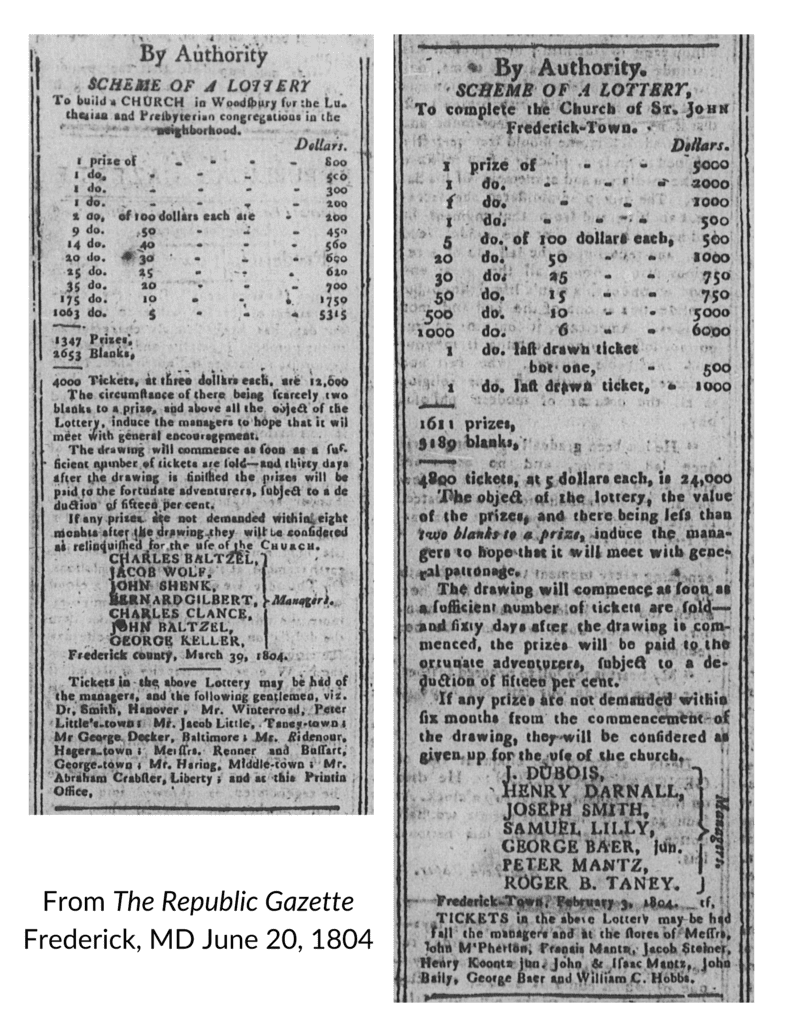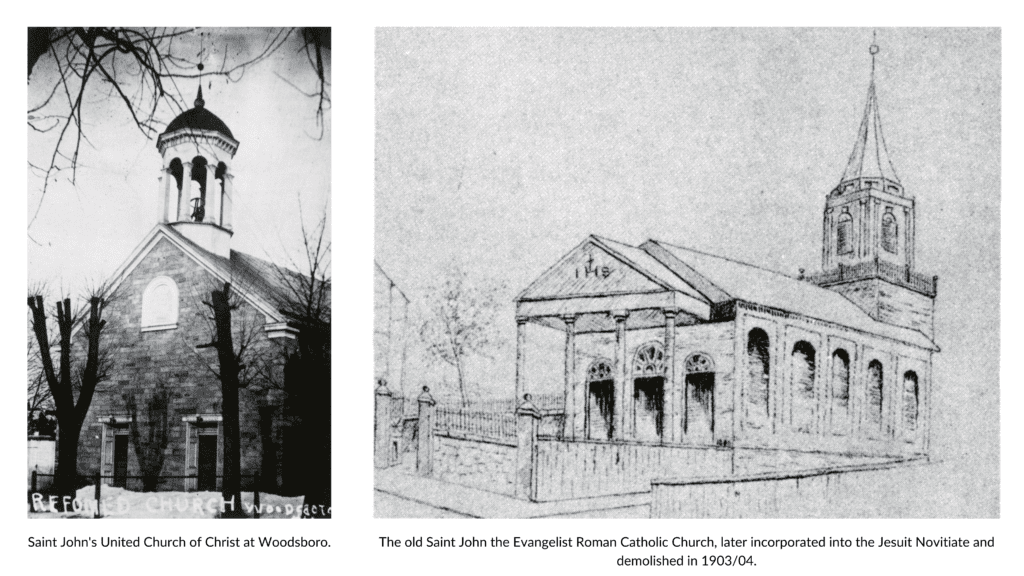Everyone is familiar with the dream of winning a major cash prize by playing the lottery. However, in the early history of the United States, lotteries were a popular form of raising money to build governmental, educational, and other public structures and to fund public services. Perhaps most surprising when viewed from our contemporary conception of lotteries, they were commonly used to help pay for the construction of houses of worship for religious institutions.

Frederick’s Republican Gazette newspaper of June 20, 1804, carried notices of two public lotteries that were raising funds to support the construction of churches in the county. One of these projects was “to build a church in Woodsbury [Woodsboro] for the Lutheran and Presbyterian congregations in the neighborhood.” The church described in this lottery notice is known today as Saint John’s United Church of Christ and still stands on North Second Street in Woodsboro. Two years before this lottery announcement appeared in the local paper, the citizens of Woodsboro laid the cornerstone for this church which was intended to be shared by the Lutheran and Reformed [noted as Presbyterian in the advertisement] congregations. The lottery was authorized to raise $12,000, of which $1,800 would go to the new church, which was not completed until fifteen years later in 1819.
The second lottery announcement concerned raising money to “complete the Church of St. John in Frederick-Town.” The building referred to in this announcement was the old Saint John the Evangelist Roman Catholic Church, which stood on the northwest corner of East Second Street and Chapel Alley, opposite the present Saint John’s Church. Father John DuBois, the future Bishop of New York and the founder of Mount Saint Mary’s University, was the priest in charge of the Frederick parish when construction was started on this church in 1800. Among the commissioners assigned to oversee this lottery was Frederick attorney and later Chief Justice of the United States Supreme Court Roger Brooke Taney. The lottery for the Catholic Church was intended to raise $24,000, of which $3,600 would be given to the parish for completing the construction.

Why were lotteries a popular form of public fundraising? Many religious, educational, and other public institutions in the early United States lacked their own financial resources to complete major initiatives like constructing new buildings. The lottery offered a self-funding means of raising money by voluntary participation. Having recently fought a revolution, in part, against excessive taxation, this concept was significantly more palatable than a compulsory tax. The receiving institution generally earned 15% of the total funds raised, the rest being paid out in prizes to the ticket purchasers, who had about a 50% chance of winning something from the lottery. There were many other projects supported by public lotteries in Frederick County in the early-nineteenth century. These included the bell tower of the Lutheran Church at Emmitsburg, completed in 1814, and the purchasing of firefighting equipment for the Independent Hose Company in Frederick.
Sources:
Dasgupta, Anisha. “Public Finance and the Fortunes of the Early American Lottery.” Yale Law School, (2021). Accessed April 6, 2023.
McWilliams, Jane. “’Fortune Attends the Brave:’ A Brief History of Lotteries in Maryland.” Maryland States Archives, (1989). Accessed April 6, 2023.
April 1, 2023 by Jody Brumage, Heritage Frederick Archivist
